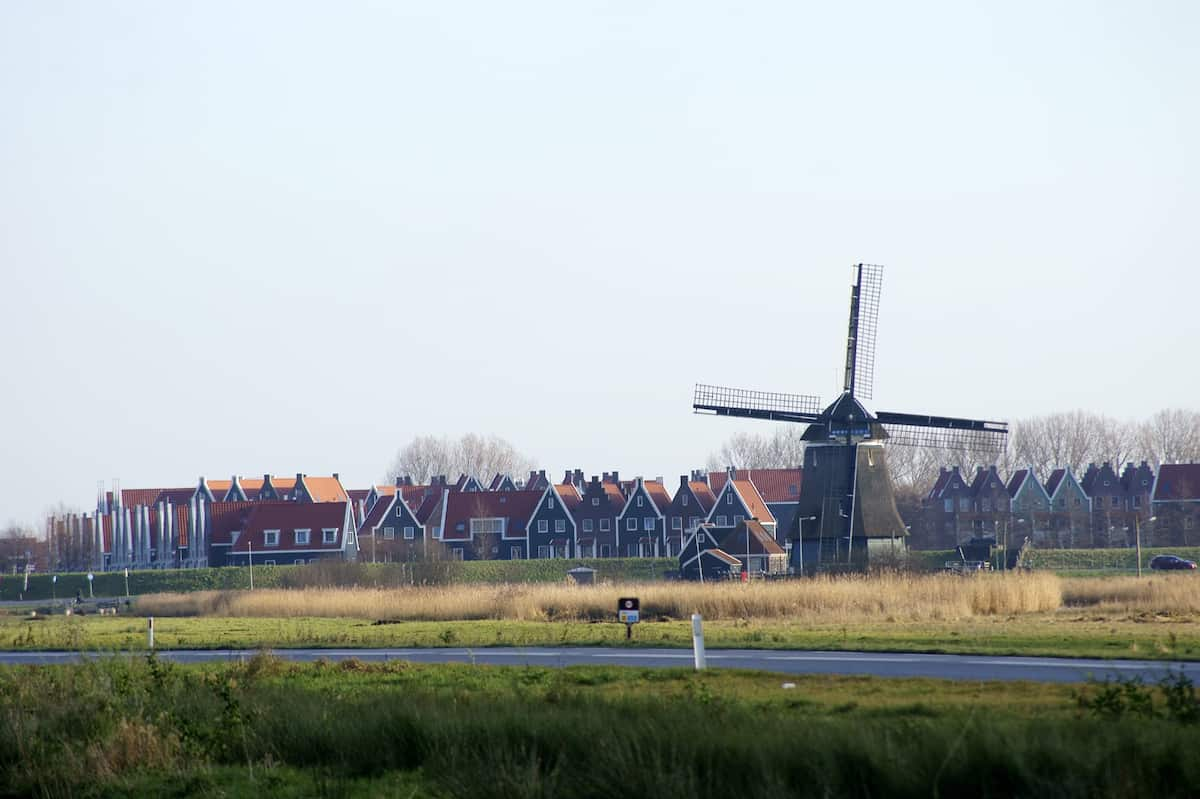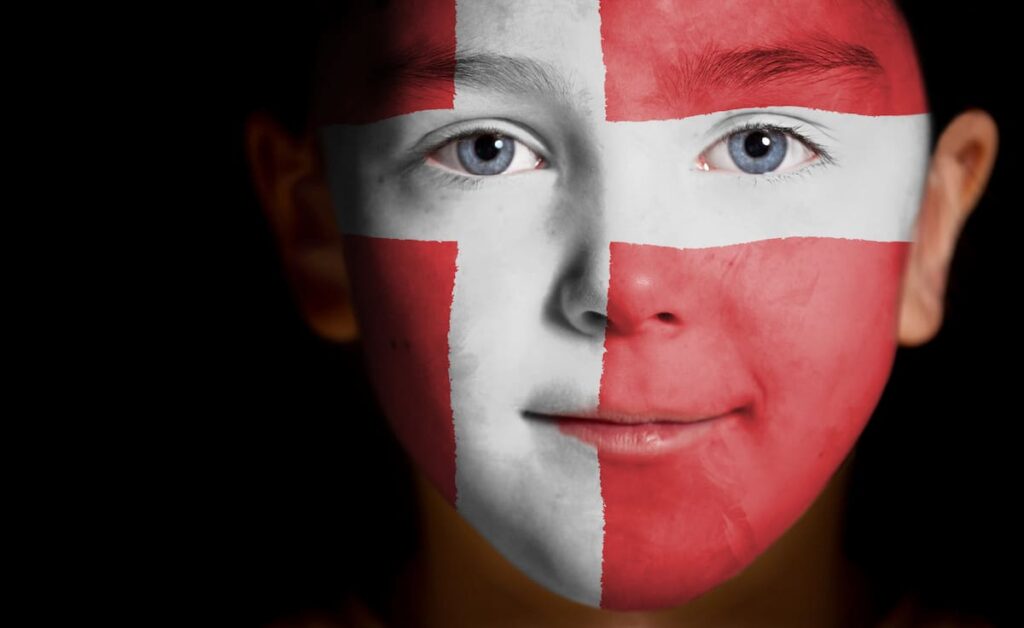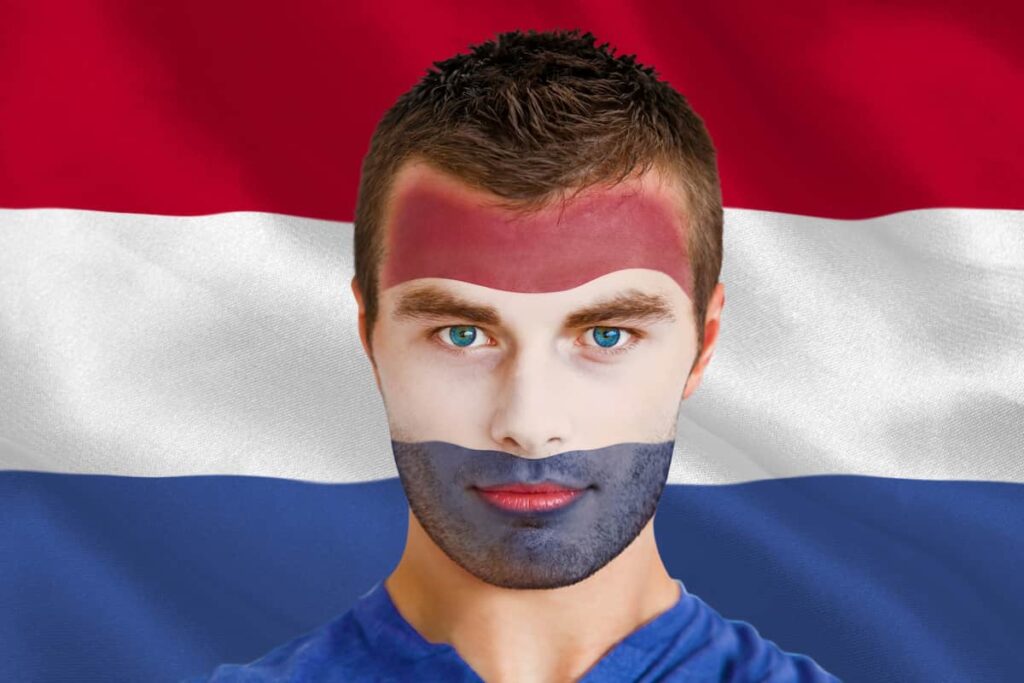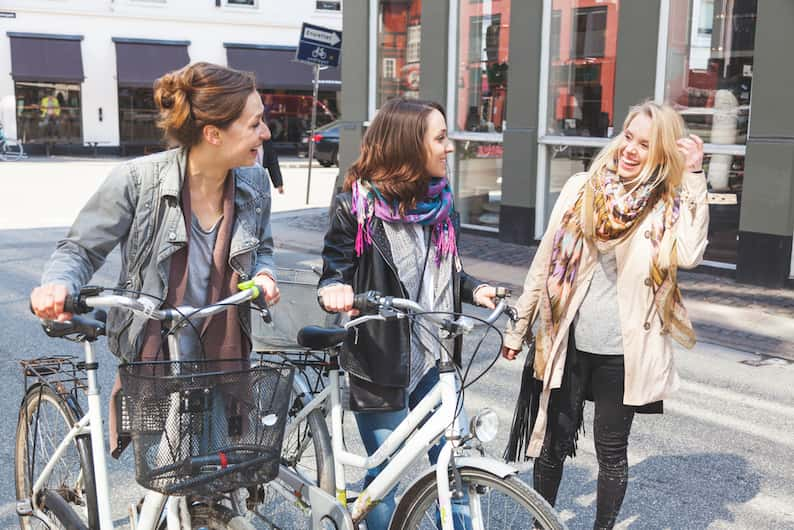The question of being Danish vs Dutch seems to pop up all the time. After all, they’re two small northern European countries that like bike riding…so is there really any difference at all? Even the words sound sort of similar!
Well, although these two great places do have a lot of similarities, there is absolutely a difference between being Danish and Dutch.
In addition, while their languages may have some similarities thanks to those strong Germanic roots, here is where the differences really become apparent.
So grab a koffie or perhaps a kaffe and settle in to see why it’s worth knowing the difference between the people, cultures and languages from the Netherlands and Denmark – and why it’s definitely a good idea to visit both!

Table of Contents
Danish vs Dutch: What’s the difference?
Danish and Dutch are two distinct languages spoken in two different countries. Danish is spoken in Denmark, while Dutch is spoken in the Netherlands and part of Belgium. Similarly, someone from Denmark is Danish while someone from the Netherlands is Dutch.
Both Danish and Dutch are Germanic languages, which means they have many similarities in terms of grammar and vocabulary. However, they are still considered separate languages, with their own unique characteristics and differences.
One of the main differences between the two languages is their pronunciation. A common joke amongst other Scandinavians is that Danish people sound like they’re speaking with a potato in their throat, which should give you an idea of how deep in the throat a lot of Danish sounds are.
Dutch, on the other hand, has a slightly more “sing-song” quality to it, but some harsher sounds. The letter “r”, for example, can be pronounced almost like you’re gargling – although not every time it’s used.
Can Dutch speakers understand Danish speakers?
Danish and Dutch share a lot of common words due to their shared Germanic roots, but there are also many words that are unique to each language. Nevertheless, Dutch speakers can understand Danish speakers to some degree, although the two languages aren’t mutually intelligible.
Danish and Swedish, for example, are far more easily understood by speakers of each language.
That said, it’s not hard for the Dutch to understand Danish people, especially in light of some of their very close vocabulary. Check out this video for a perfect illustration of this:
How this came about is due to their common ancestor language, which is known as Proto-Germanic. Proto-Germanic was spoken by the ancient Germanic tribes that lived in northern Europe.
Over time, Proto-Germanic evolved into a number of different Germanic languages, including Danish and Dutch. These languages continued to evolve and develop over the centuries, giving rise to the modern Danish and Dutch languages that are spoken today.
Do Danes speak Dutch?
Danes do not speak Dutch. Instead, they speak Danish. The only time a Dane would speak Dutch is if they intentionally set out to learn it. At the same time, given the similarities between the two languages, it is possible for a Dane to understand Dutch to some extent.
That is, as explained above, there are a lot of words in Danish and Dutch that are extremely similar – take a look at the video above for a great example of this.
However, this doesn’t mean that all Danes speak Dutch. It’s simply a good example that while Proto-Germanic may have evolved into many different northern European languages today, their shared roots still do shine through.
Find out more: What Do People in Denmark Speak – and Can You Speak English There?
Danish vs Dutch culture
Being Dutch and being Danish refer to the cultural and national identities of people who are from the Netherlands and Denmark, respectively. These are two distinct nationalities, with their own unique cultures, customs, and traditions. In addition, one of the main differences between the Dutch and the Danish is their geography.
That is, while they’re both relatively small countries located in northwestern and northern Europe respectively, they are clearly different countries that don’t even share a border.
Another difference between the two nationalities is their history and cultural heritage. The Netherlands has a rich cultural heritage that is influenced by its history as a maritime trading nation, which Denmark also has, albeit perhaps overshadowed by its long, more well known history of Viking raids and conquests.
Related: 7 Best Danish Birthday Traditions (to Celebrate Like the Danes)
Are you Dutch if you’re from Denmark?
No, someone from Denmark is Danish. You can only be Dutch if you come from the Netherlands. Similarly, someone from Denmark will speak Danish, not Dutch, while the opposite is true for someone from the Netherlands.
Of course, I guess you could theoretically hold dual citizenship…but that is a pretty specific example of someone from Denmark also being Dutch.
Otherwise, in general, you’ll call someone from Denmark a Dane.

Are people from Denmark called Dutch?
No, people from Denmark are not called Dutch. Instead, they are Danish. Dutch is a term that is used to refer to people from the Netherlands. Denmark and the Netherlands are two separate countries, and their inhabitants have distinct nationalities and cultural identities.
As I mentioned earlier, Danish and Dutch are two distinct languages that are spoken in different countries. Danish is spoken in Denmark, while Dutch is spoken in the Netherlands.
Because of this, the terms “Danish” and “Dutch” are often used to refer to the languages and nationalities of people from these two countries.
Why are the Dutch called Dutch?
The term “Dutch” comes from the Old English word “þeodisc” which means “belonging to the people”, referring to the fact that Germanic languages and not Latin were spoken by the general populace. This became “deutsch” (which today means “German” in German) and, eventually, “Dutch”.
This term was used to refer to the language and people of the Netherlands, given the Germanic roots of the language spoken in that area.
However, this isn’t the case in Dutch itself. That is, in Dutch, the people of the Netherlands are called Nederlanders, which means “lowlanders” in reference to the low-lying geography of much of the country.
Is Dutch closer to Danish or German?
Dutch is much closer to German than Danish. While the vocabulary between the three is similar, Germany and the Netherlands share many more words than Danish. In addition, the pronunciation in Dutch and German, while not identical, is much more similar than Danish and Dutch.
Denmark isn’t far from Germany but then again, neither is the Netherlands, with both countries sharing a land border with Germany. However, major cities in the Netherlands are much closer geographically to Germany than their Danish equivalents. This may explain some of the reasons behind why Dutch is more similar to German.
(I’ll add though that a good German friend of mine once described Dutch as “like a drunk German child”, so take that as you will.)
Do Germans understand Dutch?
Germans can understand Dutch to some extent, due to their shared German roots and the fact that both languages now have similarities when it comes to their vocabulary and grammar rules. However, they cannot have a fully fluent conversation without some lessons.
This video shows how Germans view their Dutch comprehension, if you’d like to see some actual German speakers’ thoughts on this:
Does Danish or Dutch sound closer to English?
Overall, Dutch is closer to English than Danish largely due to the fact that they share a more similar vocabulary. In addition, both Dutch and English have words that are similar in both pronunciation and meaning. This can make it easier for English speakers to learn Dutch compared to Danish.
Additionally, the Dutch accent is often considered to be closer to English than the Danish accent, making it easier for English speakers to understand Dutch speakers.
However, there’s a big caveat here: this is definitely a case of it all being relative. For instance, I say that the pronunciation and accent are closer to English in Dutch than Danish, but that’s mainly because Danish doesn’t sound like English at all.
As don’t get me wrong, Dutch definitely sounds foreign to an English ear. This includes, as mentioned before, some much harsher sounds than in English (unless you’re prone to gargling mid-sentence – in which case, you do you).
But overall, if you’re comparing Danish vs Dutch in terms of similarity to English, Dutch will win by default.
You may also be interested in: Denmark vs England Flags: Who Influenced Whom?
Are Dutch and Danish mutually intelligible?
Dutch and Danish are not mutually intelligible, which means that speakers of one language cannot understand the other language without some prior knowledge or exposure. While both Dutch and Danish are Germanic languages and share some similarities, they are still quite distinct from each other.
While it’s not so hard for speakers of one language to understand the other, it can still be challenging, especially once the vocab or sentence structure starts to get confusing.
In comparison, Danish and Swedish are more closely related to one another and are considered to be mutually intelligible to a certain extent. This means that while there may be some differences between the two languages, speakers of Danish and Swedish can often understand each other’s speech with some effort.
Which is harder: Dutch or Danish?
For someone who speaks German, learning Dutch or Danish is going to be easier than for speakers of other languages. For native English speakers, neither language is known for being particularly easy to learn, especially when it comes to spelling and pronunciation.
Danish pronunciation is probably harder overall for English speakers to learn, although Danish grammar is easier.

It’s also worth noting that neither language is particularly useful outside of Denmark and the Netherlands respectively – which Danes and Dutchmen will readily acknowledge! You could argue that Dutch is more widely spoken, with a larger population and the fact that the Flemish part of Belgium speaks a dialect of it, as well as its close similarities to Afrikaans.
But overall, they’re not really used outside of their respective countries. This means that it’s less a question of whether Danish or Dutch is harder, but which country you plan to move to at some point and so need to learn the language – whether you like it or not.
Why are Dutch people not Scandinavian?
Dutch people are not considered Scandinavian because the Netherlands is not a part of the Scandinavian region. Scandinavia is a region in northern Europe that includes the countries of Denmark, Norway, and Sweden. The Netherlands is a separate country located in northwestern Europe, and is not considered part of Scandinavia.
There are a few reasons why the Netherlands is not considered part of Scandinavia. One reason is geographical. The Netherlands is located outside of the Scandinavian peninsula, which is the region of Europe that is home to the Scandinavian countries.
Another reason is historical. The Netherlands has a distinct history and cultural heritage that is different from the other Scandinavian countries. The Netherlands has a long history as a maritime trading nation, while the Scandinavian countries do have this too, albeit combined with a history that is more closely tied to Viking raids and conquests.

How far is Denmark from the Netherlands?
The distance between the capital cities of Denmark and the Netherlands is approximately 800 kilometers (500 miles) by road. The two countries are located in northern Europe, and are separated by the North Sea, although can be reached by land via Germany.
There are several ways to travel between Denmark and the Netherlands. One option is to take a ferry from one of Denmark’s ports, such as Esbjerg or Hirtshals, to one of the Netherlands’ ports, such as Rotterdam or Amsterdam. This is a popular option for travelers who are driving, as it allows them to bring their car with them.
Another option is to take a flight between the two countries. There are several airports in both Denmark and the Netherlands that offer regular flights between the two countries. This can be a convenient option if you really need to reach your destination quickly.

However, my preferred option is definitely traveling by train. It’s fast, comfortable and better for the environment.
It’s not the fastest route, noting that the train journey takes about 11 hours. However, if you can schedule the journey to be over a work day (noting that the trains have free Wi-Fi that’s good enough to take calls on – trust me I’ve tried) then you basically don’t even notice the time is passing.
You’ll have to change in Hamburg and likely Osnabrück but even so, it’s still my preferred way to get between the two cities. After all, while the land is flat the whole way, the views on a sunny day can be truly beautiful.
Danish vs Dutch similarities and differences
Food and drinks
One difference between Denmark and the Netherlands is their food with the typical dishes in each country being quite different. However, there are similarities, especially with the focus on meat and fish-heavy dishes, which perhaps isn’t surprising given both countries’ maritime history.
Examples of Danish cuisine include smørrebrød (open-faced sandwiches), stegt flæsk (fried pork), and frikadeller (meatballs). Dutch cuisine, on the other hand, is known for its rich, flavorful dishes, such as stamppot (mashed potatoes with vegetables), kroket (deep-fried meat ragout), and poffertjes (small pancakes).
Related: Stenbiderrogn: The Ultimate Guide to Danish Caviar
It’s also worth noting that both countries are very big on craft beer, with a lot of the Dutch craft beer being due to the Belgian influence, whereas Denmark tends to stick to its own Danish brands. Having done some in-depth research into both (in the interests of science, obviously), I can confirm they’re both excellent.
Population and geographical size
A third difference between Denmark and the Netherlands is their populations. Denmark has a population of about 5.8 million people, while the Netherlands has a population of about 17.3 million people. This means that the Netherlands is much more populous than Denmark – and, in fact, is the most densely populated country in the world.

This tracks with the fact that, in terms of size, Denmark is slightly larger than the Netherlands. Denmark covers an area of about 43,000 square kilometers (16,600 square miles), while the Netherlands covers an area of about 41,500 square kilometers (16,000 square miles).
Interestingly, the capitals of each country are much closer in population size. Amsterdam has around 900,000 people while Copenhagen is just behind, at 815,000. As this shows based on the overall population size of each country, other Dutch cities tend to be much bigger than other major Danish cities.
Related: 9 Best Cities to Live in Denmark (For Your Best Life)
Currency
Another difference between the Danes and the Dutch is their currency. Denmark uses the Danish krone as its official currency, while the Netherlands uses the euro.
This means that if you’re traveling between the two countries, you’ll have to exchange some money. That said, debit or credit cards are very widely accepted in both countries, to the point that you may find that you literally don’t need to use any cash at all in either of them.
System of governments
One similarity between Denmark and the Netherlands is their system of government. Both countries are constitutional monarchies, which means they have a king or queen as their head of state, but their governments are run by elected officials.
In Denmark, the monarch is Queen Margrethe II, while in the Netherlands, the monarch is King Willem-Alexander. As a nice touch, both royal families are very close – you can see the Dutch king and queen wishing their “dear Aunt Daisy”, the Danish queen, a happy birthday in this video.
Weather
Another similarity between Denmark and the Netherlands is their weather. Both countries have a temperate climate, with mild winters and cool summers.
However, they also both receive a significant amount of rainfall throughout the year, with the wind also being infamous in each country. We’ll get to cycling in a second but safe to say, the commitment of the people in each country to traveling by bike aligns pretty closely with the amount of wet weather gear they all own.
Cycling
A third similarity between the Dutch vs the Danish people is their love of cycling. One of the things that Denmark is known for just as much as the Netherlands is their extensive networks of bike paths and bike-friendly infrastructure, and many people in both countries use bicycles as their primary means of transportation.
In fact, there’s often an unofficial rivalry between Copenhagen and Amsterdam about which is the best city for biking in the world. Honestly, they’re both excellent, and the fact that it’s so easy to commute or otherwise get around by bike in either capital is a credit to both countries.

Welfare systems
One difference between Denmark and the Netherlands is their welfare systems. Denmark is known for its strong welfare state, much like many of the other Scandinavian countries, which provides a wide range of social services and benefits to its citizens.
The Netherlands also has a welfare system that is excellent, but is arguably not as comprehensive as Denmark’s.
Healthcare
Another difference between the Danish and Dutch people is their healthcare systems.
Both countries have universal healthcare, but the Dutch system includes a requirement for all adults living or working in the Netherlands to have basic insurance., while the Danish system is based on a system of taxes.

Cost of living
The cost of living in Denmark and the Netherlands can vary depending on a number of factors, such as location, lifestyle, and personal preferences. However, in general, the cost of living in both countries is considered to be high compared to other countries in Europe and around the world.
According to Numbeo, a website that provides cost of living data, the cost of living in Denmark is about 16% higher than in the United States. This includes the cost of groceries, housing, utilities, and other expenses. The cost of living in the Netherlands is about 9% higher than in the United States, making it slightly cheaper than Denmark.
One reason why the cost of living in Denmark and the Netherlands is considered high is the high taxes that are levied in both countries. Denmark and the Netherlands have some of the highest tax rates in the world, which can make the cost of living more expensive.
Another factor that can affect the cost of living in Denmark and the Netherlands is the strength of the local currency. The Danish krone and the euro, which is the currency used in the Netherlands, are both considered to be strong currencies, which can make the cost of living higher.
